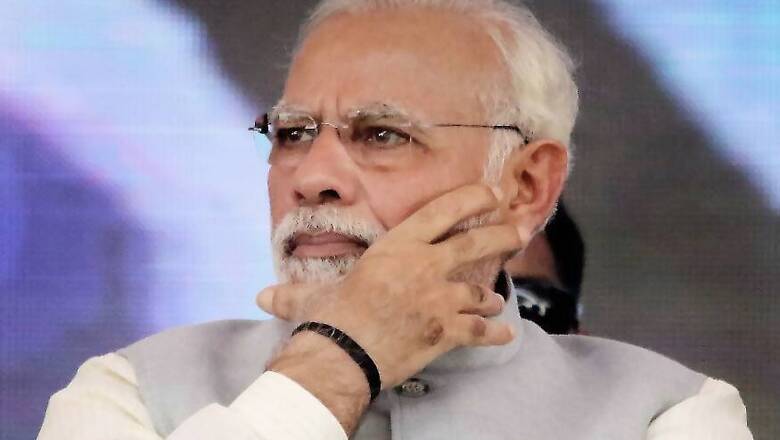
views
The Indian government has decided not to join the Regional Comprehensive Economic Partnership (RCEP), which would have been the world’s largest trade pact, over concerns that it could lead to a potential flood of Chinese imports in the country.
According to government officials, Prime Minister Narendra Modi, attending the RCEP summit in Bangkok, stood firm on India’s concerns in the trade deal not being addressed and decided there cannot be any compromise on core interests. “RCEP agreement does not reflect its original intent. The outcome was not fair or balanced,” they said.
External affairs ministry’s secretary (East), Vijay Singh Thakur, said that India conveyed its decision not to join the RCEP at the summit on Monday. This, he said, reflects both the government’s assessment of current global situation and of the fairness and balance of the agreement.
News18 had on Sunday reported that objections raised by India had dampened hopes of finalising the 16-nation pact, which would have included 30 percent of global GDP and half of the world's people. The Indian government was worried its small businesses would be hit hard by a flood of cheap Chinese goods imports.
The RCEP is a trade deal that was under negotiation among 16 countries — the 10 member countries of the Association of Southeast Asian Nations (ASEAN), and the six countries with which the ASEAN bloc has free trade agreements (FTA). These included Australia, China, South Korea, Japan and New Zealand.
In his speech at the RCEP Summit, Modi said that a lot of things, including global economic and trade scenarios, had changed during seven years of RCEP negotiations that can’t be overlooked.
“The present form of the RCEP Agreement does not fully reflect the basic spirit and the agreed guiding principles of RCEP,” the PM said, adding that India’s farmers, traders, professionals and industries have stakes in such decisions.
“When I measure the RCEP Agreement with respect to the interests of all Indians, I do not get a positive answer. Therefore, neither the Talisman of Gandhiji nor my own conscience permit me to join RCEP,” he further said.
Sources said the decision to stay away from the trade pact was taken after key issues - inadequate protection against import surge, insufficient differential with China, possible circumvention of rules of origin, keeping the base year as 2014 and no credible assurances on market access and non-tariff barriers – could not be resolved during the talks over the weekend.
India also raised the unviability of having Most Favoured Nation status among member countries as the benefit would then lose its edge in case of nations beyond the bloc.
According to officials, India’s stand was a mixture of "pragmatism, the urge to safeguard interests of poor and effort to give an advantage to India’s service sector while not shying away from opening up to global competition across sectors."
The negotiations were first launched at the 2012 ASEAN Summit in Cambodia, but had sputtered along since then as India'a cautious stance since then to protect domestic interests had been the major hurdle. It is not clear whether the RCEP agreement would move forward without India.
There were indications that the rest of the countries may announce a provisional agreement amid trade tensions between the US and China that have pushed economic growth in the region to its lowest in five years. The deal is expected to be signed next year at the summit in Vietnam.
Why India Was Wary
Under RCEP, India would have been required to eliminate tariffs on 74% of goods from China, Australia and New Zealand, and 90% goods from Japan, South Korea and ASEAN. In the midst of an economic slowdown, India faced the risk of becoming a dumping ground for cheap Chinese goods.
India’s position was a difficult one as while it can’t remain isolated, it wanted to make sure that Chinese goods don’t dominate its market. New Delhi, in particular, had sought protections against Chinese agricultural goods.
Several voices in India, from the Congress to farmers’ outfits and even the RSS-linked Swadeshi Jagran Manch, had opposed the deal and argued that the Free Trade Agreement with China would be the death knell for India’s manufacturing and production sectors.
India already has a $57 billion trade deficit with China, which has been a major cause of concern for policymakers. However, some experts believed that working out an agreement with China within the framework of RCEP would have been the only way to deal with Beijing.
A Free Trade Agreement, however, could have been the next big leap after the 1991 Liberalisation policy that India needs to hurtle towards its target of becoming a $5 trillion economy.
India has $100 billion trade with five trading partners. But, it doesn’t have FTAs with any of them. If we New Delhi were to double the GDP by 2022, it also needs to double its trade volume with its big trading partners.



















Comments
0 comment